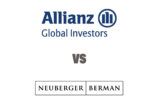Although high yield bonds offer a higher coupon that may look attractive given a soft-landing scenario, investors need to be selective going forward.
This is according to Julien Houdain, head of global unconstrained fixed income at Schroders and co-manager of the global credit income strategy.
“High yield is not the slam dunk that it was a few months ago with [cheap] valuations,” he told a recent media briefing in Hong Kong. “It’s the same for investment grade, so we are selective in that part of the market.”
This is why he stressed that sector and credit selection is important for investors considering moving out of cash and into fixed income.
Martha Metcalf, head of credit for North America at Schroders, flagged the longer duration of investment grade bonds relative to high yield as an important factor to consider.
“If the Fed does what we expect it to do, duration is going to matter more with rates falling,” she said.
“You could almost envision investment grade outperforming high yield which would be pretty atypical in a high-rate environment because sub-investment grade bonds yield more. But that duration and total return component will be more important in investment grade.”
She noted how the investment grade bond market has a duration that is more than double that of the high yield market.
The Markit iBoxx USD Liquid Investment Grade index for example, has an effective duration of 8.33 years versus the Markit iBoxx USD Liquid High Yield index duration of 3.3 years.
Need to be selective
Metcalf said she is cautious from a sector perspective in industries that “may not be as stable and defensive as we might have expected”.
“A great example is US utilities, where there’s a lot of spending to come to build out the utility grid. They trade at tight valuations, so compensation is pretty minimal for all that financing that is to come,” she explained.
“A similar example is in the US cable industry, where they are spending more on plants and infrastructure.”
The industry also faces growing competition from streaming businesses such as Netflix, Apple, and Amazon.
Although investors might have expected these two industries to be very defensive and stable, Metcalf said: “We think that it may not provide you with the stability that it has in the past.”
On the flipside, two sectors she favours more are banking and energy. “Banking is one of our top picks – it’s done really well the last couple quarters,” she said.
“Banking balance sheets are the strongest they’ve been in decades; they’re starting to show more earnings in this higher rate environment, and while some people are concerned about commercial real estate. The problems are well known and are manageable.”
She cited how for many banks, commercial real estate only forms a small portion of their assets, of which they have already made provisions for.
“So we don’t see that as a material driver of returns,” she explained. “Instead, we see the valuations in the banking sector as very attractive.”
Energy issuers have transformed
Another sector she pointed to was energy, due to the conservative management of their balance sheets and oil production.
“In the past in that industry, the way a CEO was compensated was based on how much oil the company, regardless of whether it was profitable or not,” she said.
“So you can imagine when oil prices are high, they will produce as much as they can and they would borrow as much as they could to produce more.”
The problem is when the market turns, many of these energy companies are unprepared to manage all the leverage they had taken on.
Indeed, several years ago, energy companies used to be the source of most defaults.
Metcalf said: “By contrast, equity investors are demanding that they improve both the management of their cash flow and their production, and you can see that play out in both the equity and bond markets.”
“Energy in the US used to trade wide of the index to further compensate investors for all that volatility. Today, it trades inside the average spread of the market.”

















